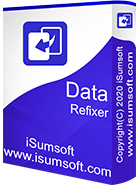Recently, Microsoft introduced the Recall feature (Preview) in the release notes for Windows 11 Insider Preview Build 26200.5600 (KB5058493) to the Dev Channel (source).
According to this Blog, Recall will be further optimized and may be included in future stable versions. In this article, we’ll walk you through everything you need to know about Recall. Let’s take a look!

Recall is an AI-powered feature first introduced by Microsoft in 2024 alongside Copilot+ PCs.
Its goal is to help users “recall” past on-screen activity — essentially acting like a memory replay system. It's a locally stored timeline of your computer usage, enhanced with AI for contextual understanding and semantic search.
It's just kind of like Clarity-the recording function. Next 4 details will make you know more about it.
Recall automatically captures a snapshot of your screen every ~5 seconds. These images are stored locally and can include websites, text, apps, buttons, chat logs, and more.

Users can search naturally using queries like “the red shoes website I browsed last week” or “the article about making better pasta.” Recall searches your history and surfaces relevant content using AI.

You can scroll through a visual timeline to revisit your digital past, similar to scrubbing through a video player.

Recall lets you extract text, reopen links, or navigate back to file paths — it’s more than just viewing old screenshots.

Although Recall is designed to enhance productivity and memory retrieval, it's not a data backup or recovery tool. It helps you recall rather than restore. This distinction has raised concerns over privacy, storage consumption, and performance. Microsoft clarified that all snapshot data is stored locally, not uploaded to the cloud, and is not used for ads or marketing. Users can delete snapshots or turn off Recall at any time.

Recall requires high hardware specifications. Here are the official system requirements from Microsoft:
| Requirement | Details |
|---|---|
| AI Capability | 40 TOPs NPU (Neural Processing Unit) |
| CPU | 8 logical processors |
| Memory | 16 GB RAM |
| Storage | 256 GB minimum, with at least 50 GB free for Recall |
| Storage Management | Recall pauses if free space drops below 25 GB |
| Security | Encryption or BitLocker enabled |
| Sign-in Method | Windows Hello with biometric sign-in enabled |
| Hardware Platform | Copilot+ PC meeting Secured-core standards |
If your PC meets the requirements and you're running Build 26200.5600, launch Recall by pressing

While Recall helps you remember what you saw, it doesn’t preserve your actual files. If you:
Recall won’t be able to recover those files.

At iSumsoft, we build tools that complement technologies like Recall.
iSumsoft Data Refixer is designed to:

iSumsoft Data Refixer
Windows Recall helps you remember what you did.
iSumsoft Data Refixer helps you get your data back.
Don’t just remember what you did, it is more important to make sure you can recover it.